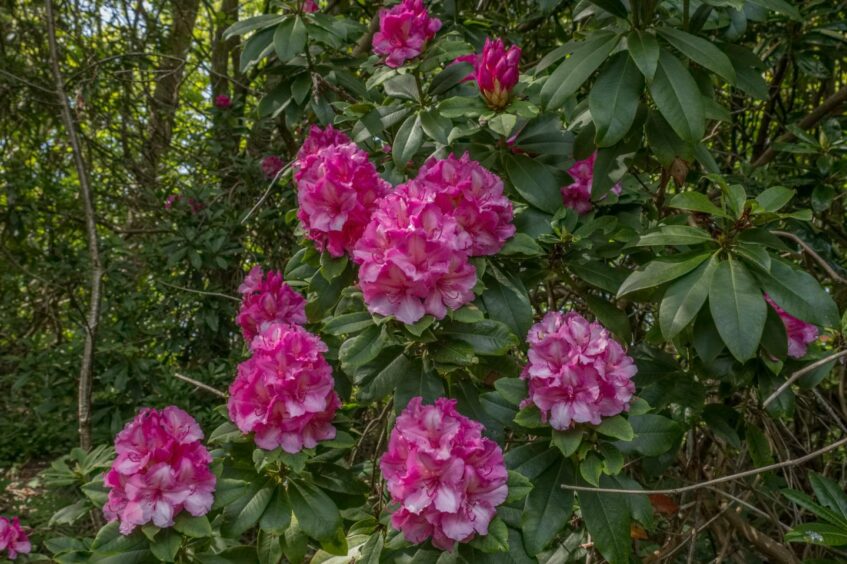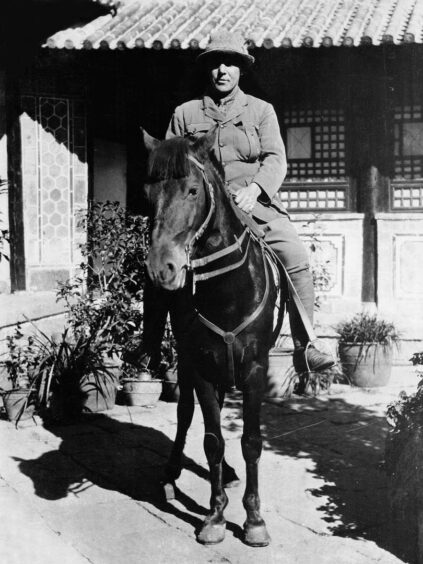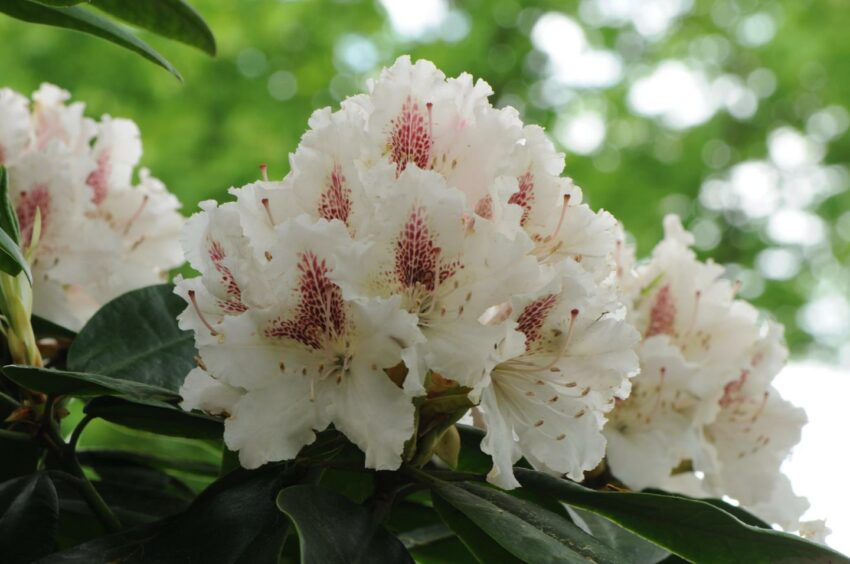There’s always something to enjoy in the garden no matter what time of year it is.
Glorious roses in summer, colourful foliage in autumn and shrubs clipped into ornamental shapes of topiary giving us interest during winter.
However there’s no doubt at certain times of the year there are displays so spectacular that they are celebrated in their own right.
We’re now coming to the end of the Snowdrop Festival where the gardens and grounds of estates, historic houses and private collectors have been opened.
They welcome us in to enjoy this little white flower growing on the carpet floor under the canopy of trees in shows of thousands of flowers.
The next big, bright thing
Just the signal we need at the start of the gardening year to tell us that our gardens are waking up fully after a few months of winter rest.
The next big seasonal festival is not so far ahead.
That’s the display of our spectacular spring gardens where it would be hard to argue against the stand out plant being the rhododendron.
They stretch from low-growing evergreen mounds to larger specimens akin to trees over 6m/ 20ft tall, producing colourful flowers so eye-catching that the celebration of this plant will not be missed in our urban gardens.
Scotsmen George Sherriff and members of the Cox family have led the way bringing back hundreds of species collected from China and the Himalayas.
However, since March 13 would have been his birthday, it seems only fitting that today we celebrate their fellow plant hunter George Forrest, famed for his introduction of rhododendrons.
Brave plant hunter George Forrest
Born in 1873, as a child he developed a similar character to those he succeeded. He had a love for the outdoors and natural history, gained through roaming the Scottish countryside near his home in Kilmarnock.
By his late twenties he was working in the herbarium (a systematically arranged collection of dried plants) of the Royal Botanic Garden, Edinburgh improving on his knowledge of plants ‘until something better came along’.
This duly did in 1903, when he was recommended to the wealthy merchant A.K. Bulley, who was in need of a suitable plant collector.
He who would employ Forrest to explore south-east Tibet and north-west Yunnan in western China in search of exciting new plants for his garden.
This area of three main rivers at the bottom of deep gorges and high mountains was found to be amazingly rich in flora.
It was a paradise that just had to be investigated ,to feed the craze of the fanatical plant collectors back home, desperate to be the first to have plants that no other had.
Plant hunters need the assistance of the local people if they are to be successful.
Forrest achieved this by respecting their ways, learning their language and through his own expense arranged for thousands of Yunnan Chinese to be vaccinated against smallpox.
Fleeing for his life
Rough paths teetering on the edge of steep rock faces, crossing over rivers using rickety bamboo rope bridges made travels full of danger, but it was the political unrest in the region that was to blight his first expedition.
He was caught in the troubles for over a week. Escaping hostile hunters, during the chase he fell into a dense jungle rolling 200ft/ 61m down a steep slope.
With his body bruised and clothes tattered, he resorted to wading waist deep upstream in a river for a mile so, to avoid leaving any tracks.
He eventually found sympathy in a local village. Villagers helped him to safety by escorting him high up through the mountains, over the dangerous territory.
Climbing the equivalent of four Ben Nevis’s during the rainy season, his foot injured after impaling it on a spike of thick bamboo made it a miserable time for Forrest.
Adding to his woes, he had to ‘tramp over Primulas, Gentians, Saxifrages and Lillies’, the very treasures he wished to collect.
If that was me, once I’d reached safety I would have headed home never to return, but he was not to be deterred.
He finished this expedition and completed a further six over the next 26 years.
George Forrest became one of the most prolific plant collectors there has ever been with 31,000 herbarium specimens and introducing over 300 new rhododendron species to Britain.
In future years, you could be forgiven for not seeing this as a significant enough date for remembering another of our country’s great plant hunters.
In the coming weeks, when our lives are lit up by these bold and colourful stalwarts of our gardens, I hope you can think back on what it took to get them to our shores.
A small column like this cannot do those stories justice.
If you would like to learn more on the adventures of George Forrest, then I would recommend seeking out a copy of the book on the life of this man by Brenda McLean.













